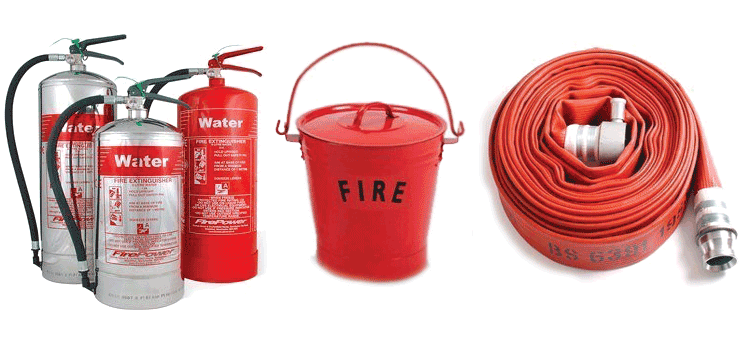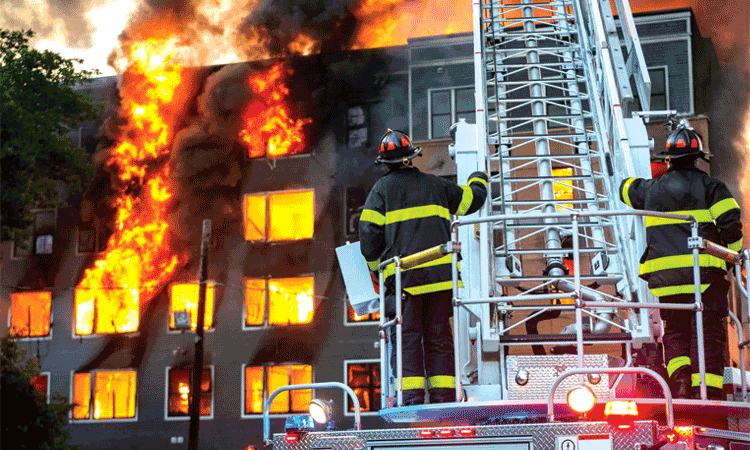Every year in India, about 10,000 + people die due to fire and related causes. Although the rate decreased by 50 % in the past 8 years, 10,000+ deaths are very high. Among these deaths, around 70 % of deaths are due to fire hazards in buildings.
Fire not only leads to the loss of lives and properties but also to the failure of concrete. Subjecting concrete to high temperatures is said to cause the spalling of concrete.
Effects of temperature on concrete are:
100 deg. C = No effect or negligible loss of efficiency
200 – 250 deg. C = 25% Loss of efficiency
500 – 600 deg. C = Complete loss of efficiency
Causes of Fire Hazards in Buildings
Some of the causes of fire hazards in buildings are:
- Combustion of combustible material
- Due to underground electric table
- Building fire from bone fire
- Electric short circuit
- Due to electric appliances like heating of air condensing, electric heaters, etc
- Storage of combustible chemical and flammable liquid
- Due to lightning
- Due to smoking
Effects of Fire Hazards in Buildings
Some of the effects of fire hazards in buildings are:
- Production and release of toxic gases
- Destruction of water supply and electric supply system
- Combustion and damage of timber structure and flammable material in a building like furniture, roof, paper, clothes, etc.
- Injury to humans and animals
- Loss of essential properties, documents, foods, or lives
- Environmental pollution and increase in global temperature
Remedial Measures of Fire Hazards in Buildings
Some remedial measures for fire hazards in buildings are:
- Collecting waste paper in a tight-fitting metal container
- Store important paper in a fire-resistant safe cage
- Do not store electric appliances near the electric circuit
- Do not store flammable liquid for a chemical; if unavoidable, keep it in a safe cage only
- Install fire safety measures on a building to reduce fire risk
- Treat the combustible material with a fire retardant chemical to reduce the chance of ignition
Prevent smoky area - Install a proper fire alarm system
- Create public awareness
This way, there may be many more causes, effects, and remedial measures for fire hazards.
In the event a fire takes place, you must be prepared to fight it and extinguish it. For this you must be prepared. You must have the requisite firefighting equipment in the building.
Different Types of Firefighting Equipment
There are many different types of firefighting equipment. Some of these equipment can be used by anyone, while others must be operated by a member of the fire brigade.
Here is an overview of the different types of firefighting equipment that are currently available.

Fire Extinguishers
You should always be aware of the dangers of the incorrect use of firefighting equipment. This is true for all firefighting equipment, including fire extinguishers.
A fire extinguisher should never be used to prop open a door. It should always be fixed to the wall, and it should be checked monthly by a service technician.
Most modern fire extinguishers are developed to deal with many different fire scenarios. Fire extinguishers can be filled with powder, water additive, foam, or carbon dioxide.
When choosing a fire extinguisher, be sure to pick one that will fight the fires that are most likely to develop in your business or home.
Fire Hoses
The fire hose reel lets out a powerful stream of water that extinguishes large fires. The hoses usually come in a fire hose reel, which holds 30 metres of tubing.
This makes the hose easy to unravel so a fire can be fought quickly. Fire brigades can also attach different nozzles to the end of the hose to fight a variety of fire situations.
A fire hose is one of the standard types of firefighting equipment, and it is effective against even the largest fires.
Fire Buckets
A fire bucket is considered the simplest piece of firefighting equipment, but still serves a purpose. The standard red bucket has the word ‘Fire’ written on it and it is made of metal or plastic.
It can be filled with water or you can fill it with a flame smothering powder like Flamezorb.To use, dump the bucket over the fire and keep repeating the process until the fire is out.
Fire and Welding Blankets
Fire blankets are used to smother small fires that start in the workplace or at home. Economy fire blankets or white kitchen blankets are a good choice for a small kitchen or for a caravan.
A larger workshop or restaurant kitchen should have a 1.2m x 1.2m blanket in case of emergencies.
If you work in a commercial kitchen or in a place that stores flammable liquids, you’ll want the large 1.8m x 1.75m fire blanket. These blankets have a special pull tab that allows you to open them quickly.
Welding blankets are used to protect welders from sparks and splatter. These blankets come in three different weights and sizes.
Flamezorb
Flamezorb is a powder that effectively smothers fires. It’s non-toxic and easy to clean up. Each bag of Flamezorb has enough powder to fill a ten-litre fire bucket.
If you work in an area like a garage forecourt where this is a high potential for spillage, Flamezorb is good to have around.
Using Firefighting Equipment
It’s important to have fire safety equipment at hand both at home and at work. You never know when a fire is going to start, and so having a fire bucket, fire blanket, or fire extinguisher could save your life.
It’s also important to remember that things like a fire hose, firefighting foam Equipment, and dry risers can only be used by trained members of a fire brigade.
The different types of firefighting equipment are all important to have around in case of emergencies.

